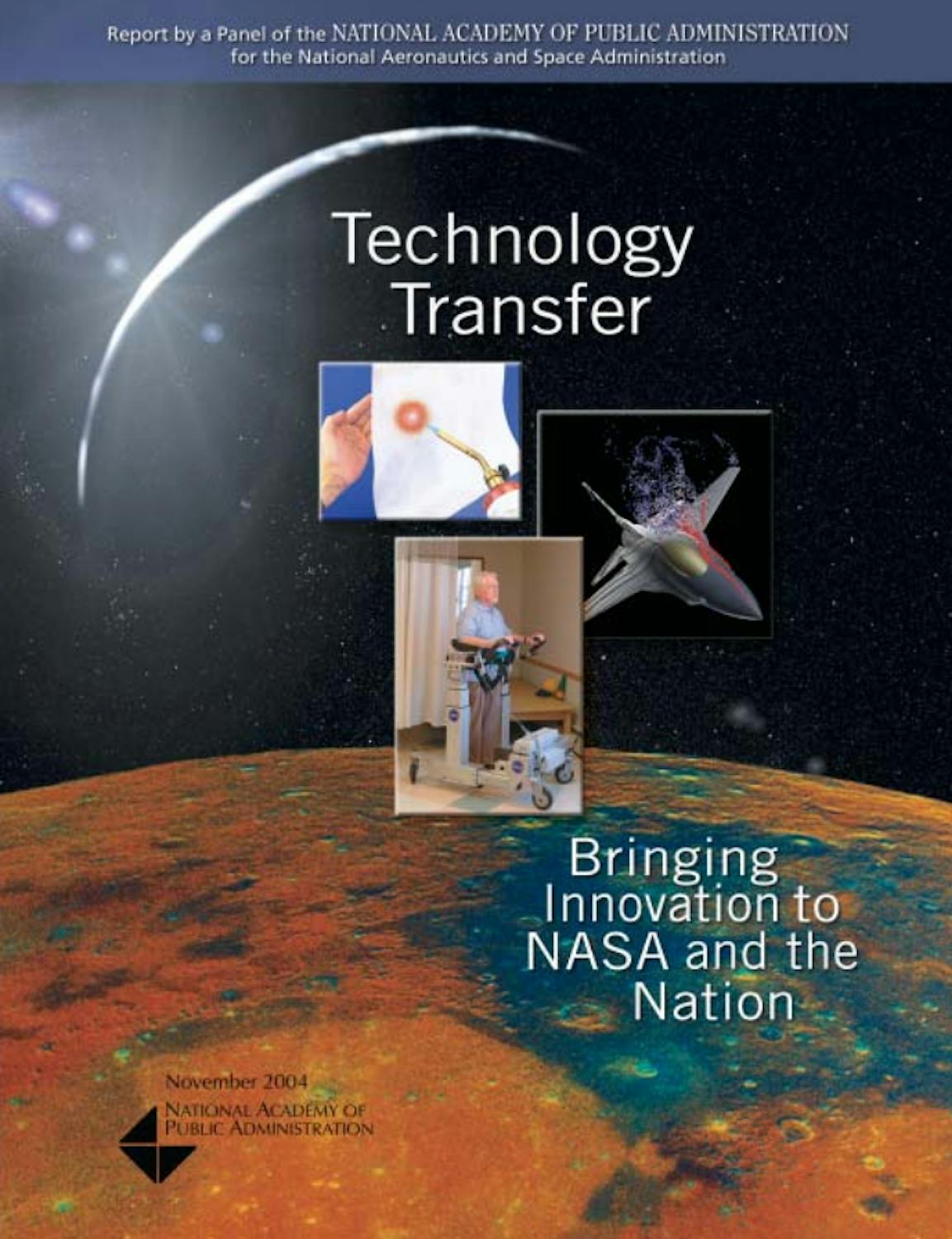
Technology Transfer: Bringing Innovation to NASA and the Nation
Since its creation in 1958, the National Aeronautics and Space Administration (NASA) has developed a wide range of important technologies that the private sector has commercialized. These include such essential aspects of modern life as small computers, cellular communications, and lightweight and heat resistant materials.
Despite these past contributions, NASA has not been as successful with its recent technology transfer efforts due to organizational changes, budget difficulties, and a lack of program focus. Equally important, private industry and universities often are the leaders in many technologies that NASA needs for its missions, which is a fundamental change from prior decades. Managing effectively in this new environment requires a different approach to technology transfer and a different set of skills.
The Innovative Partnerships Program (IPP) is responsible for NASA’s technology transfer efforts. In 2004, IPP shifted its primary focus from commercializing NASA’s technology (“spinout”) to a much greater emphasis on bringing technology from the private sector into the agency to meet mission needs (“spin-in”). NASA asked the Academy to conduct an independent review of the technology transfer function and determine how it should be organized to maximize benefits to NASA and the nation as a whole.
Click the button below to view the View Study Report.
View ReportKey Findings
The NASA Administrator should support an agency-wide technology transfer effort by establishing that technology transfer is a core element of the agency’s mission that requires the attention and support of NASA’s leadership team, relevant program officials, and major contractors. The associate administrators for each mission directorate, supported by the center directors and program heads in the centers, should be held responsible for making better use of technology outside NASA—both through acquisition and through partnerships—to meet the agency’s mission needs. NASA should make the center directors responsible for the spin-out aspects of technology transfer, with the understanding that centers will support staffing and activities beyond those funded by headquarters. NASA should develop a comprehensive system for evaluating its technology transfer efforts that utilizes a balanced scorecard for measuring outputs, assesses the long-term economic and social impacts of NASA technology transfer, and establishes individual performance standards for all officials who have a role in technology transfer.
Recommendations
The Panel overseeing this Academy study recommends that the NASA Administrator make a stronger leadership commitment to technology transfer by establishing it as a core element of the agency’s mission and moving the function to the Administrator’s office. The Panel’s fundamental conclusion is that technology transfer is destined to fail so long as it is viewed solely as the responsibility of an isolated group of IPP officials.
